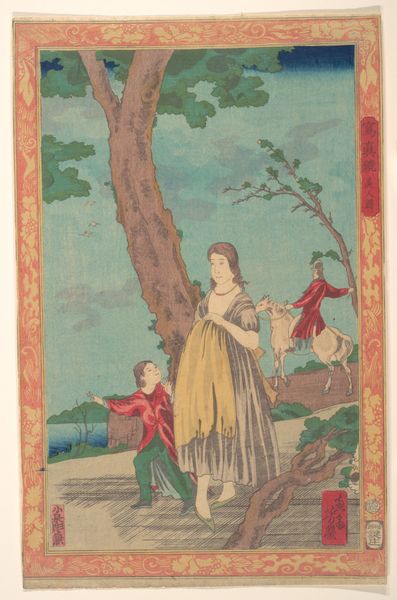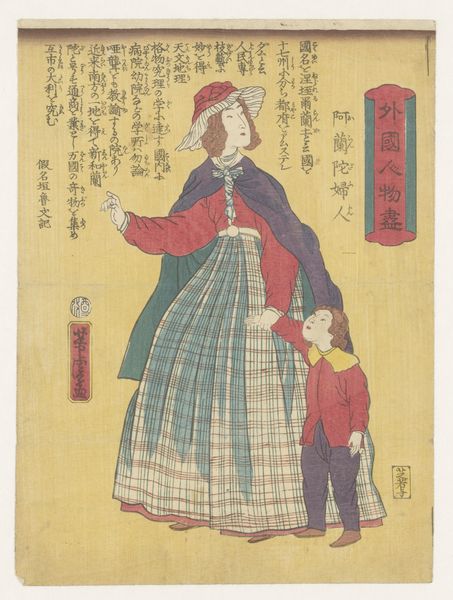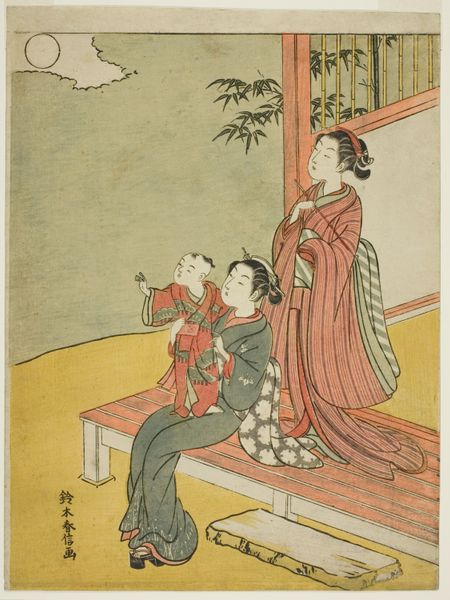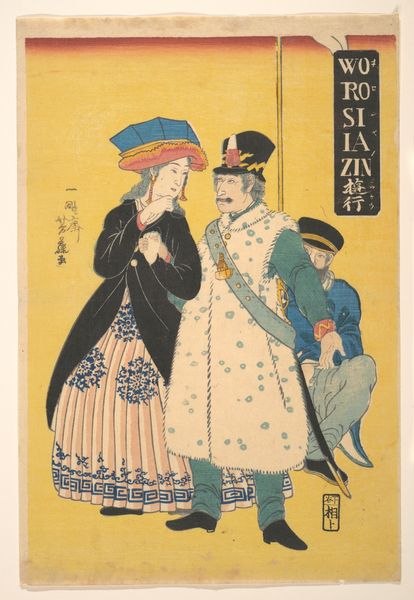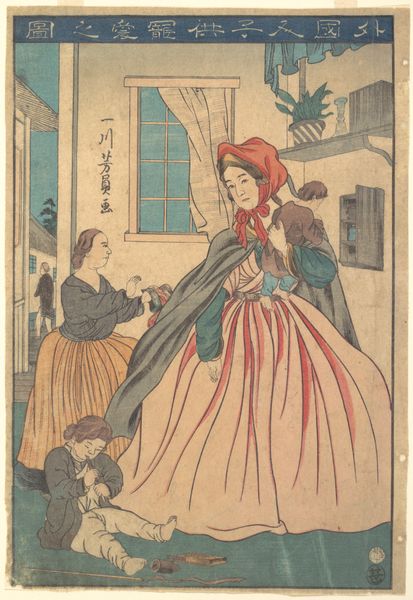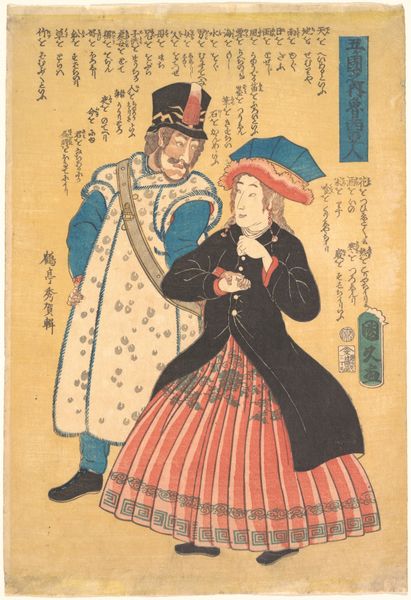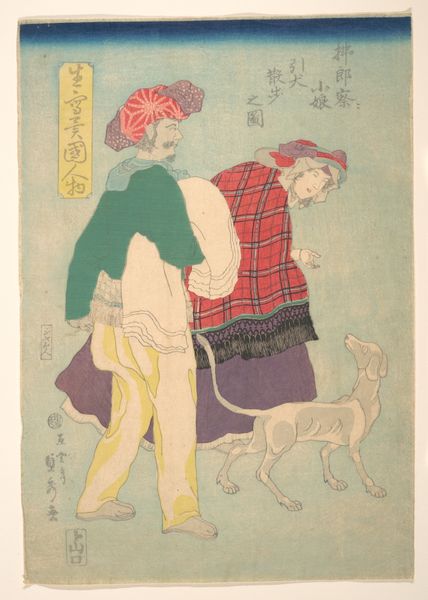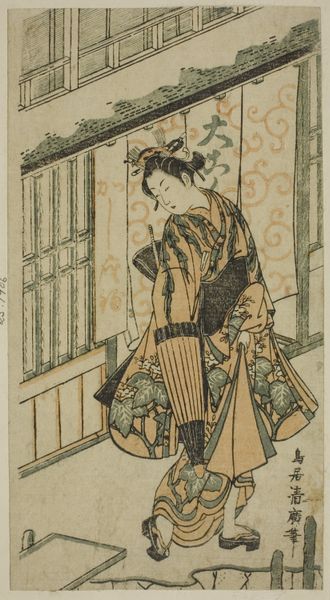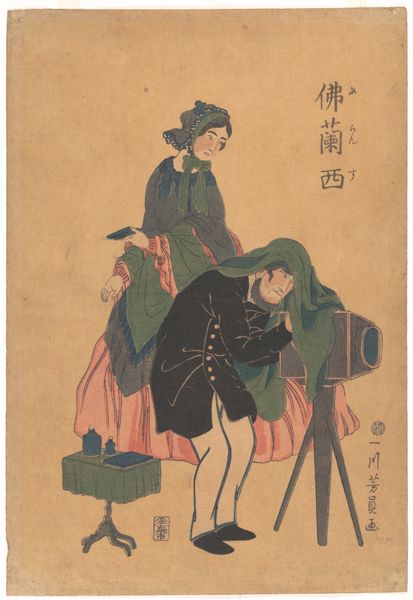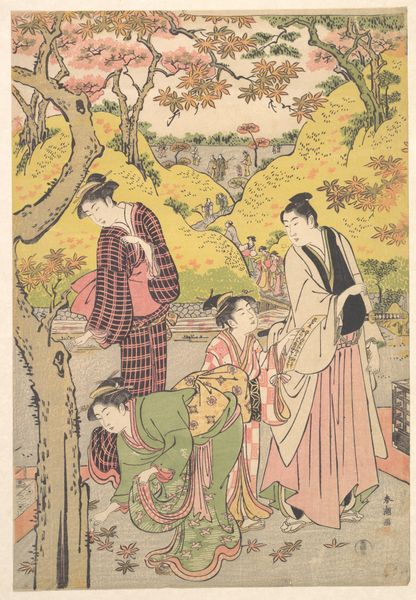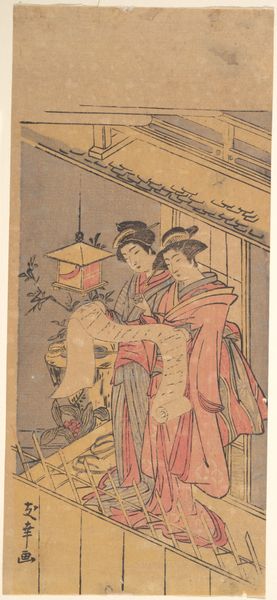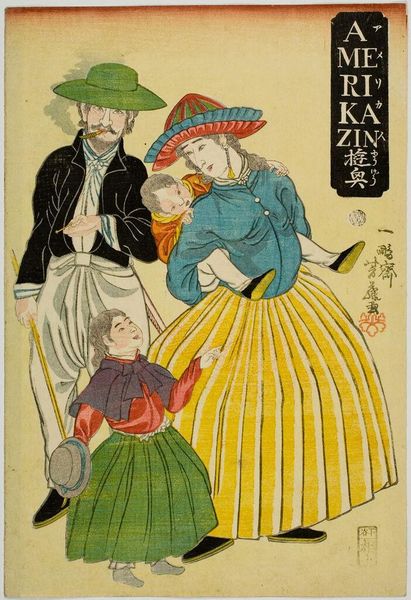
Dutch Woman and Child (Seisha ikoku jinbutsu Oranda fujin aijidō no zu) 1860
0:00
0:00
print, woodblock-print
#
portrait
# print
#
asian-art
#
ukiyo-e
#
figuration
#
child
#
woodblock-print
#
genre-painting
Dimensions: Image: 14 3/4 x 10 in. (37.5 x 25.4 cm)
Copyright: Public Domain
Utagawa Sadahide made this woodblock print called ‘Dutch Woman and Child’ during the 19th century in Japan. It's a fascinating example of how Japanese artists engaged with the wider world, especially during a time of increasing contact with European powers. Sadahide presents a ‘Dutch’ woman - though more generally European - and children. The artist meticulously renders European clothing, hairstyles, and even facial features, yet these are filtered through a Japanese aesthetic sensibility. The composition, line work, and color palette all bear the hallmarks of ukiyo-e prints, a popular art form in Japan at the time. This print reflects Japan's complex relationship with the West in the 19th century. Following a long period of isolation, Japan was beginning to open its doors to foreign trade and influence. Prints like these offered a glimpse into foreign cultures. We might ask: who was the intended audience and what ideas about the West were being circulated and consumed? By studying the historical context, consulting period documents, and analyzing the visual language of the print, we can better understand the cultural exchanges and power dynamics at play in 19th-century Japan.
Comments
No comments
Be the first to comment and join the conversation on the ultimate creative platform.

